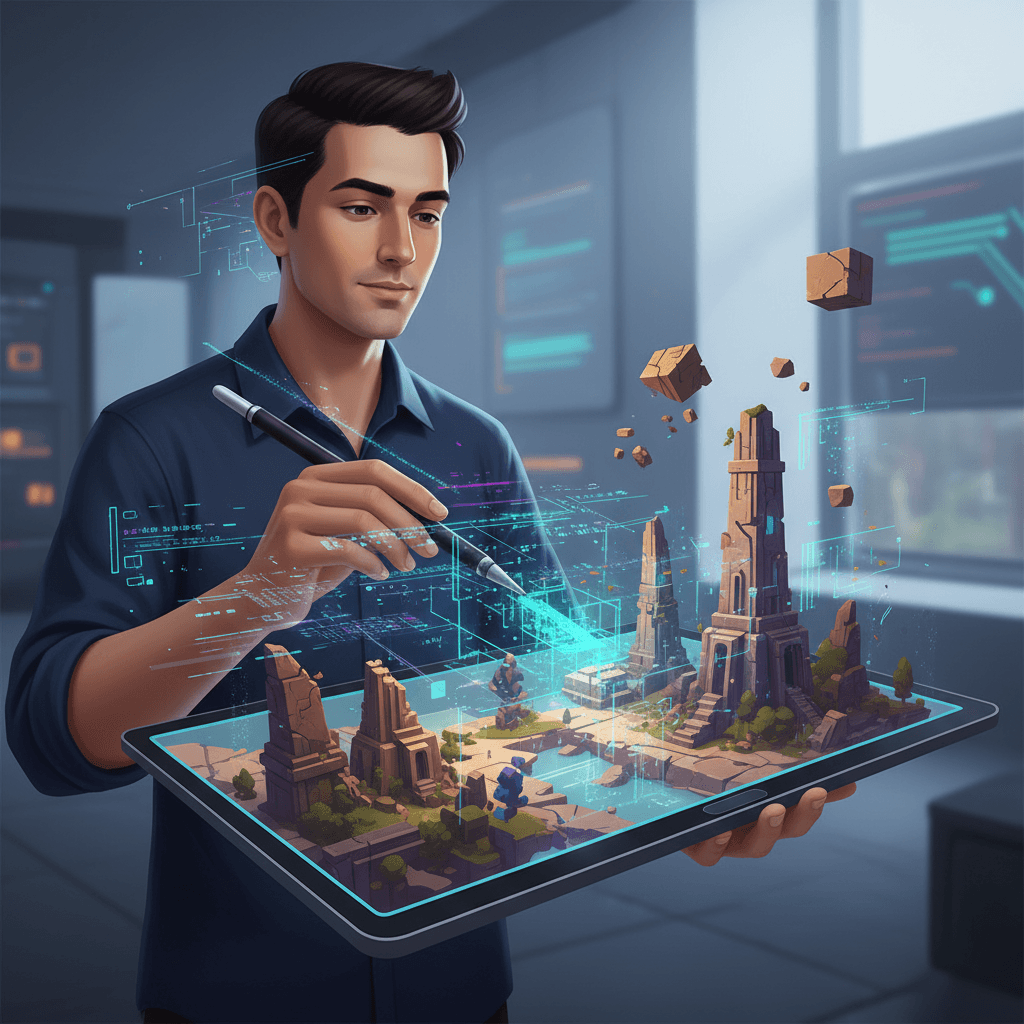EA Partners Stability AI, Bringing AI to Game Development's Creative Core
"Smarter paintbrushes": EA and Stability AI unite to transform game creation, boosting efficiency amid creative and financial pressures.
October 24, 2025

In a landmark move signaling a deeper integration of artificial intelligence into the creative core of the video game industry, Electronic Arts (EA) has announced a strategic partnership with Stability AI.[1][2] The collaboration will see the gaming giant and the prominent generative AI firm, known for its powerful Stable Diffusion image model, co-develop a suite of AI-powered tools aimed at transforming and accelerating the game development process.[3][4] This initiative seeks to boost content creation efficiency while maintaining that human artists and designers will remain at the heart of the creative vision.[1] Stability AI's 3D research team will be embedded directly within EA's creative ecosystem to build these new workflows.[1][5] The partnership arrives as the gaming industry grapples with soaring development costs and timelines for AAA titles, pushing major studios to explore AI as a means to innovate and streamline production.[4]
The primary focus of the collaboration is to create what EA Sports' Head of Technical Art, Steve Kestell, calls "smarter paintbrushes" for developers.[3][6] These are not tools intended to replace artists, but rather to augment their abilities and speed up iterative processes.[5] Initial projects will concentrate on developing systems to accelerate the creation of physically based rendering (PBR) materials, which are crucial for realistic lighting and textures in modern games.[1][7] The new tools will aim to generate high-quality 2D textures that maintain precise color and light accuracy across varied in-game environments.[3][8] Furthermore, the partnership will explore AI systems capable of pre-visualizing entire 3D environments based on text-based prompts, allowing artists to rapidly prototype and creatively direct the generation of game worlds with greater speed.[7][5] Kallol Mitra, VP of Creative Innovation at EA, stated that the goal is to amplify creativity by "Giving artists, designers, and developers the power to dream bigger and build more."[9][2]
This strategic alliance is set against a significant financial backdrop for Electronic Arts. The company is currently undergoing a massive $55 billion leveraged buyout backed by major global investors, including Saudi Arabia's Public Investment Fund.[1][9] Industry analysts suggest that the adoption of AI-driven production tools could be a key strategy for EA to manage the substantial debt incurred from the buyout, improve operational efficiency, and increase profit margins under its new ownership structure.[1] The move aligns with previous statements from EA CEO Andrew Wilson, who has described AI as being at "the very core of [EA's] business," with the company reportedly having over 100 active AI and machine learning projects underway.[10][11] This partnership is a clear execution of that vision, aiming to leverage technology to make development faster and cheaper without sacrificing quality.[11]
The announcement has ignited a broad and complex discussion across the gaming and technology sectors. While EA and Stability AI frame the collaboration as a way to empower creatives, the news has been met with a degree of skepticism from the gaming community and industry professionals.[9][7] Concerns persist about the potential for AI to devalue the work of human artists and lead to job displacement in the long term.[9][8] There is also push-back from players who have previously reacted negatively to the discovery of AI-generated content in games or marketing materials.[7] However, the trend toward AI integration is industry-wide, with other major publishers like Krafton, the company behind PUBG: Battlegrounds, also announcing an "AI-first" strategy.[3][12] Proponents, such as Take-Two's CEO Strauss Zelnick, have argued that generative AI will ultimately increase employment by boosting productivity.[3] This partnership, therefore, represents a pivotal test case for how one of the world's largest game publishers will navigate the balance between technological advancement, creative integrity, and financial pressures.[1]
Ultimately, the collaboration between Electronic Arts and Stability AI marks a significant acceleration in the adoption of generative AI within AAA game development. By embedding AI at the foundational stages of asset and environment creation, the partnership has the potential to redefine production pipelines that have been in place for decades.[4] The stated goal is to free up developers from repetitive tasks, allowing them to focus on more ambitious creative endeavors and refine gameplay experiences.[7][5] Prem Akkaraju, CEO of Stability AI, emphasized that embedding his research experts with EA's teams will unlock "the next level in world-building power."[1] As EA begins to implement these "smarter paintbrushes," the entire industry will be watching closely to see if this fusion of human creativity and artificial intelligence leads to richer, more expansive interactive worlds or if it signals a controversial shift in how interactive entertainment is made.[4]
Sources
[1]
[2]
[3]
[4]
[5]
[9]
[10]
[11]
[12]